Apple iPhone 4S Review
The iPhone 4S is Apple's top of the line smartphone, but is it just a small upgrade over the iPhone 4 or something entirely different? It looks the same, but does it act the same? New in the iPhone 4S is Siri, Apple's virtual personal assistant, along with an upgraded camera, twice the speed as far as processing and downloads are concerned, and a redesigned antenna system that also supports global roaming for Verizon and Sprint users. Are these new features enough to upgrade your iPhone 4, though? What about iPhone 3GS owners or maybe even those of you who are stuck using some other smartphone you bought because the salesperson said it was just good as that iPhone your carrier didn't offer at the time? Read on to find out.
Hardware / Design
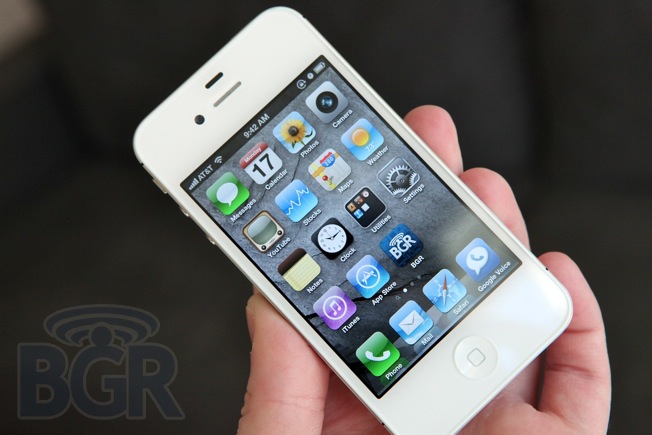
The iPhone 4S combines some of the best materials with what is arguably the finest smartphone design on the planet — you don't even need to see or hold one to know that. Why? Because it's basically identical to the original iPhone 4 that launched last year in June.
While the iPhone 4S external hardware doesn't greatly differ from the iPhone 4, there are some subtle and welcome changes. For starters, the iPhone 4S incorporates the updated external antenna design found on the Verizon iPhone 4. Instead of three breaks in the stainless steel middle band that surrounds the handset, there are now four symmetrically placed breaks.
I like this layout better because while Apple's "Antennagate" issues were exaggerated, it was still a problem at times if you happened to hold the phone in a way that completely smothered the bottom-left corner of the phone. After over a year of consciously and then subconsciously avoiding that spot with my grip, this new antenna design makes me feel a bit more at ease. In fact, I haven't noticed an issue at all even when purposely applying the death grip across one, two or even all four seams this time around.
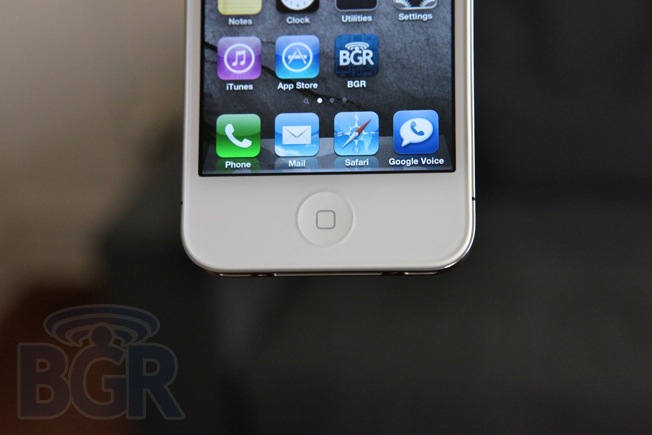
There are also a few physical hardware changes like a redesigned home button (mostly from the inside) that should fix reliability issues. While not touted by Apple, I can also tell that there has been a big change with the microphone and speakerphone, but I'll go into that a little bit later.
The big upgrades with the iPhone 4S are internal. The iPhone 4 wasn't a slow device by any means; in fact, it performed and felt faster than most other smartphones that had much faster processors thanks to Apple's complete control over the OS from top to bottom, including the user interface. The iPhone 4S though, is much faster than the iPhone 4 with most tasks, and it offers up seven times the graphics performance of the iPhone 4. Apps open instantly now, there's no lag whatsoever, web browsing (which was already arguably better than it is on any other mobile device) is even faster now, and gaming on the 4S most certainly has a notable performance increase.
This device, Apple touts, is the first smartphone to incorporate two antennas that is able to switch between them even while on a phone call, offering a superior phone calling experience. This is in addition to being a true world phone for Verizon and newcomer Sprint, who for the first time is offering the iPhone 4S and the previous-generation iPhone 4. In short: Apple made the best smartphone, from a hardware and design perspective, even better.
iOS 5
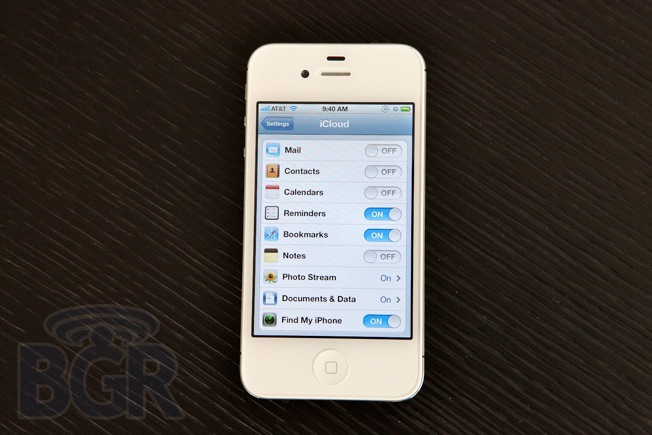
Apple released iOS 5 as a free upgrade for all iPhone 3GS, iPhone 4, iPad, iPad 2, and third and fourth-generation iPod touch owners. It also ships with the iPhone 4S. The new operating system brings some much needed features and enhancements to the iOS platform to play catch up with competitors, while also leaping beyond other platforms in other areas.
A major pain point in previous versions of iOS, for example, was the notifications system. They were obtrusive, they we're obstructive, they were so old school. Thankfully iOS 5 brings Notification Center, a new pull-down drawer that features all of your notifications from each and every app you'd like in addition the local weather and stocks courtesy of Apple widgets. Instead of a pop-up making you either dismiss it or read the message, new alerts simply drop down at the very top of your screen, allowing you to continue going about your business while of course letting you go into that specific alert if you'd like. It's a system we've seen before, of course, but it's better in a lot of ways.
Also new in iOS 5 is iMessage. Apple has finally introduced a messaging service that not only eliminates the need for many text messaging packages and saves you money, but also lets you communicate with any other iOS 5 device including iPad and iPod touch devices without a cellular connection. It's Apple's version of BlackBerry Messenger, and while it doesn't offer the ability to request / deny buddies, or offer advanced features like group calendar sharing, it's an excellent alternative that seamlessly integrates into the Messages app. By default, Apple will use iMessage, signified by a blue chat bubble as opposed to a green one, allowing you to bypass your carrier's text message service in order to use Apple's free one instead. Messages also show if they were delivered or read by the recipient, and you can share photos, videos, your location, contacts, and more over iMessage.
Another big addition to the iOS experience that comes alongside iOS 5 is iCloud, which works hand in hand with the brand new iPhone 4S.
With iCloud, you're able to stop worrying about syncing your content and let Apple push it instantly to all of your computers and mobile devices. For instance, you can start working on a document in iWork on your computer, pick up your iPad when you're on the sofa and pick up right where you left off, all without saving, emailing, uploading, or anything. The same thing goes with your media and content. Purchase a song from iTunes or download an app from the App Store and it's immediately available on your other iOS devices and even in your iTunes library on your computer. iCloud works across third party apps as well so you can put down a game you're playing on your iPhone, pick up your iPad and resume from the level or place you paused at.
Another major iCloud feature is called Photo Stream. After testing this feature for the last few months, I'm completely in love with it. If you have more than one computer, it used to be difficult to manage an iOS device as data including photos could only be synced with one computer. With Photo Stream, Apple automatically pushes your photos to all of your computers and other iOS devices, and it stores up to 1,000 photos for 30 days. Just grab the photos you want, and drag them to an album on any computer or even make one right from the iPhone 4S itself, and you don't ever have to worry about syncing your photos again.
Other notable iOS 5 additions include the ability to sync your device to iTunes over Wi-Fi instead of plugging it in, wireless nightly backups to iCloud, and important enhancements to the Mail app like the ability to flag your emails, search all content, mark all as read, and more. Lastly, iOS 5 enables you to use your smartphone or device completely PC-free. This means you don't need to plug it into a computer to set it up — in fact, you don't have to use a computer for anything if you don't want. You can make email boxes on the fly, make photo albums, and even set up and manage your Apple wireless network right from your iOS device.
All in all, iOS 5 brings over 200 new features and changes to the iOS platform and they add up to a dramatic improvement over a user experience that was already phenomenal.
Siri
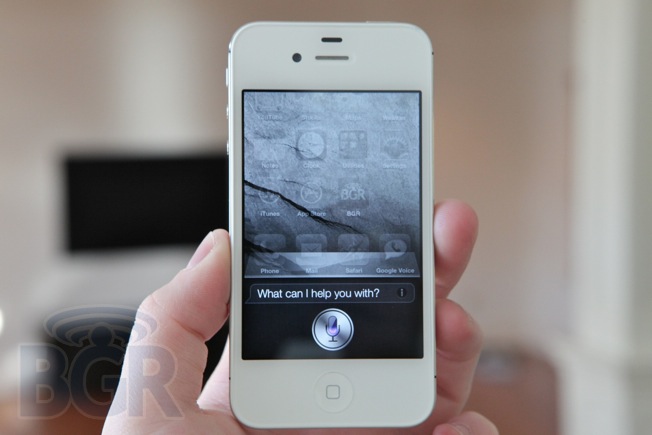
There are a few words I can think of that can accurately describe Siri: game-changing, mind-blowing, revolutionary, empowering. Is Siri really that big a deal? Yes, and here's why:
In it's current iteration as a sassy voice-driven personal assistant, Siri is incredible. It's by far the best artificial intelligence solution that's ever been offered to consumers (and I'm sure even to most non-consumers as well). Siri not only can respond to ordinary tasks but it also has the ability to extend beyond the device and pull in information from many sources of information like Wolfram Alpha, Yelp, Wikipedia, and more.
There are many people who won't understand the fawning over Siri, and following the Apple event earlier this month, a part of me was initially skeptical of Siri's usefulness beyond the initial novelty when I would play around with it and show it off to friends and family. Then I got in my car and drove somewhere. Texting and driving is terrible, but let's be honest, most of us glance at our phones or worse when we're in the car. Siri enabled me to get all of my new text messages and emails, reply to my text messages, check my calendar, move an appointment, create an appointment including inviting someone to the meeting, check the weather, play a specific song, find where a specific friend was in the world (using Apple's Find My Friends app), and make a few phone calls. I didn't look at my phone once. Now that's a game changer.

Siri allows you to have a normal conversation with your phone, and it actually is a tad bit... unsettling at first. Asking your phone to move your 1:00 p.m. calendar appointment to 3:00 p.m., call your mother back, text your friend and tell him that the movie he recommended you see was horrendous, how much 1912 times 451 is, how do I get home, remind me to grab my sunglasses when I leave the office, and how the markets are doing is just ridiculous. I've asked Siri her age, what her favorite color is, where she is from, and other personal questions, and each time there's a personal response, most of the time with slight snark.
Now, Siri does have a few hiccups. It relies on the network, so if you're using something like Optimum's Wi-Fi hotspots when you're out and about, this can cause a little bit of an issue as you switch on and off of Wi-Fi access points since Siri won't be able to connect to the server when you're disconnecting. And the few times you're on an EDGE or 1x network, Siri can take a while instead of coming back with a response almost instantly. There are also some times when Siri will mess up, but I have found that even if you don't say a few words clearly enough, or Siri doesn't detect them clearly enough, that most of the time the response will still turn out alright. When Siri misunderstands a word, you can also edit it with a simple tap to ensure an accurate response. Then of course there are the comical times Siri doesn't get what you're saying at all, but those luckily don't happen too much.
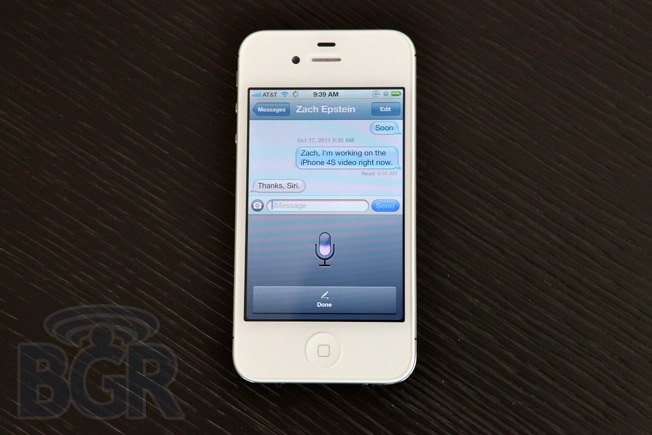
In addition to Siri, the personal assistant that lives on your iPhone 4S, you're also able to dictate text in any text field on the iPhone using the new microphone button on the virtual keyboard. This is very similar to a feature Android has had for years. Fortunately, this works way, way better.
It was rumored that Nuance is powering this feature (and parts of Siri), and I'd believe it as this performs just like the Dragon Dictation iPhone app, but being built-in changes everything. Even with background noise, Siri and voice dictation normally worked flawlessly thanks to the iPhone's second microphone for noise cancellation. Again, while driving, I didn't have to check my phone once and I could carry on a perfectly accurate text conversation with someone. It's incredible. When you think that Apple has labeled this as a beta, and that the system will improve over time, this is going to be the next big revolution as far as computer and device input is concerned. We're actually starting to live in a world where you can speak naturally to your device and it won't only understand you, but it will give you a little bit of attitude as well. Imagine something like this in different aspects of technology... what about in your TV? Instead of fumbling for the remote and navigating through those terrible, terrible, cable box interfaces, just tell your TV to tune to ESPN, or record a specific show at a certain time, and it's done. Think about how bad car navigation and voice control is, even in the best automobiles. This is the start of the next revolution in terms of interacting with a computer, just as a mouse was, just as touch was.
Siri works internationally with five languages and a few localizations, though there are some features that are limited to the U.S. for now. Apple will expand Siri to more regions and languages in 2012.
Camera / Video capture
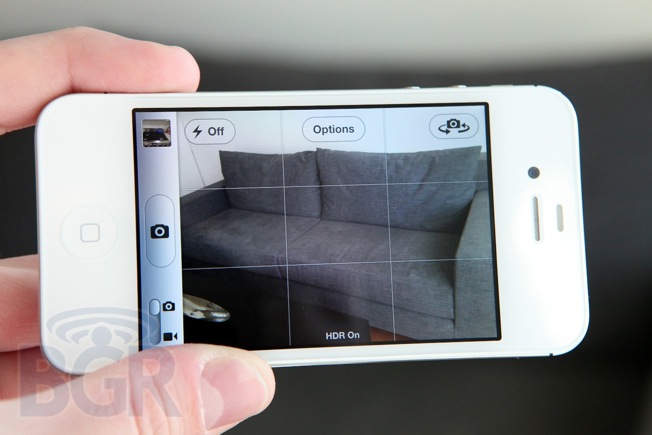
The camera on the iPhone 4S is the best camera I have ever used on a mobile device.
I remember years ago buying a Sharp GX22 and then GX30 camera phone and being impressed at the quality of photos that the phones could take. The first was a VGA camera phone, but it had a better lens than any other phone on the market, and the second featured a 1-megapixel camera. It was the first time I realized that megapixels weren't the only thing that mattered as far as photos were concerned.
That's not to say 8-megapixels isn't impressive on a smartphone, but it's what those 8-megapixels can serve up that matters, and on the iPhone 4S, they are the best photos I have seen taken on a non-camera. In fact, the camera is good enough to where I have no longer need to bring an actual camera anywhere I go outside of a dSLR for specific purposes. With face detection (it supports up to 10 people in the same photo) exposure is properly set, with the ability to use the volume up button as a shutter button, you no longer have to go hunting around for the on-screen shutter button, and with new features like grid lines that help you compose a shot even better, the camera on the iPhone 4S is a winner.
That's not even considering how amazing the iPhone 4s is in low-light situations, or how with the new camera button on the lock screen combined with the speed of the 4S and optics, you can take a photo in under 4 seconds from getting your phone out of your pocket — you won't ever miss a shot again. Photos can now be taken in rapid succession, and with the ability to edit photos right on the device itself, including red eye removal, cropping, and an auto-enhance feature, the iPhone 4S offers the most compelling camera package on any smartphone or mobile device.
As far as the video camera goes on the iPhone 4S, it's almost equally as impressive. Finally you're able to capture full 1080p HD video right from your iPhone, and in addition to crystal clear, full-frame 1080p video, the iPhone 4S offers up something even better: brilliantly, using the gyro built into the device (it can sense the device's orientation and position on three different axes), video captured with the iPhone 4S is automatically stabilized as it's taken, eliminating almost all shakes and jagged video. Additionally, using the same noise cancellation techniques that the phone uses for voice calling and for interacting with Siri, audio taken with videos is almost always crisp and clear.
Phone / Speaker
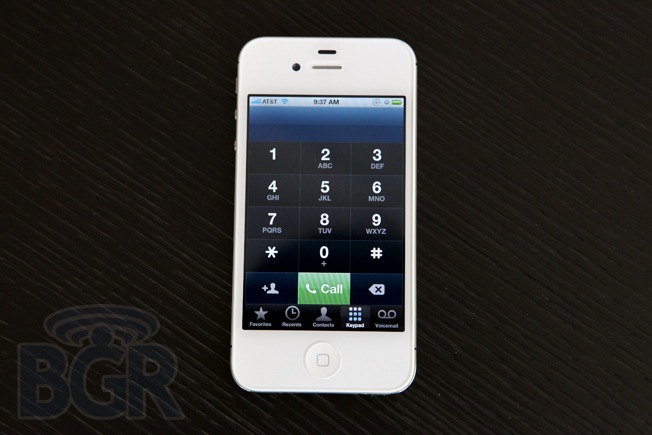
Apple's iPhones have not ever been excellent phones for voice calling. Blame the networks, blame the radios or blame whatever else you want — voice calls were almost never a good experience. I'm extremely happy that the iPhone 4S finally starts to break that mold.
In terms of radio performance, speed and call quality, I am incredibly impressed. I have more service in more places, fewer dropped calls (just about on par with a phone like a BlackBerry 9700, which runs very well on AT&T's network) and better call quality. The reason for the change? Well, Apple's new antenna system is surely a part of it as is the updated software on the device, but I think we have to give some credit to the Qualcomm radio that Apple has finally migrated to. Qualcomm is known for making class-topping chips, and this is a welcome change.
Finally, the speakerphone on the iPhone 4S improves on an already solid experience. It's not only louder than it was on previous models, but it's clearer as well, offering call and music audio that's not distorted or choppy. This improvement most likely has to do with Siri in order to ensure the experience with Apple's new personal assistant is top-notch and crystal clear, but the improvements trickle down into other areas of the device as well.
Battery
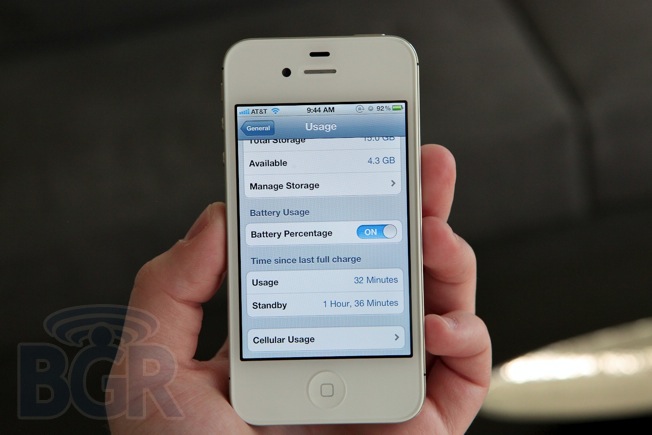
Apple notes that battery life on the iPhone 4S should be comparable to the iPhone 4 even though the smartphone features a dual-core processor with two times the speed and seven times the graphics performance over the previous model. The company also notes that the iPhone 4S will perform better in some key areas, like delivering an extra hour of talk time over 3G than its predecessor. It comes at the cost of one less hour of internet usage over Wi-Fi (10% less), and 33% less standby time. At first these sound like big changes, especially in standby time, but over the last few days I didn't notice much of a difference in battery performance compared to the iPhone 4.
Conclusion
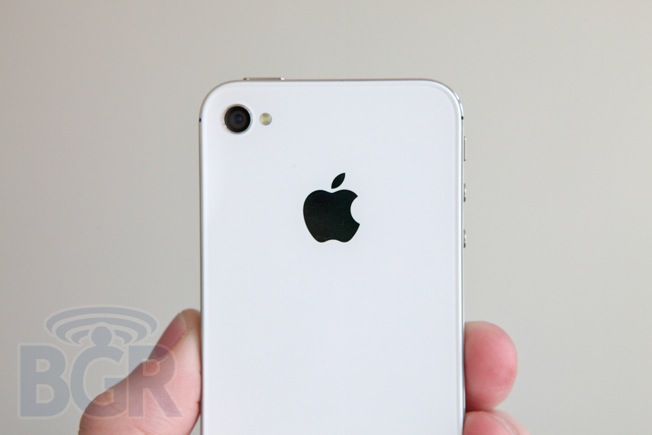
Apple didn't introduce a brand new iPhone with a radical new case design, larger display, 4G, or the ability to make you a cup of espresso. What Apple did do is drastically improve upon the company's most successful smartphone ever — and the most popular smartphone in the world — the iPhone 4.
The iPhone 4S is better in every way possible, including being up to two times faster as far as regular use is concerned. It also features the best camera and video camera on a smartphone ever, drastically improved voice calling performance, global support, downloads up to twice as fast, and Siri, a game-changing virtual personal assistant that is the start of a shift in how we interact with computers and mobile devices.
The iPhone 4S comes at a time when most iPhone 3GS users are coming up for their wireless service renewal. The iPhone 4S isn't just impressive to an iPhone 3GS owner, it blows the doors off almost any Android alternative (I'd say all, but then I'd fear for my survival), and if you're big on photography, an on-the-go person who might need an extra hand from your phone, or even require the ability to use your phone internationally if you're on Verizon or Sprint, the iPhone 4S is a worthy upgrade from any smartphone. Whether it's an iPhone 3GS or iPhone 4, a feature phone or a BlackBerry, this is the best phone Apple has ever made, and there isn't another company in the world that could deliver all of these features in such a beautifully designed, tightly integrated, and enjoyable packages.
With the iPhone 4S starting at $199 from each of the three largest carriers in the U.S. (finally), Apple is also making the original iPhone 4 available at only $99 for the 8GB model. Make no mistake, this is the most formidable smartphone tag team that exists on the planet, and while you can't go wrong with either device, the iPhone 4S really pushes what we can do with mobile devices even further into the future.
